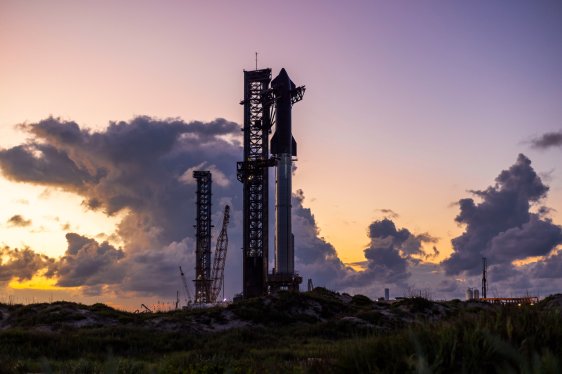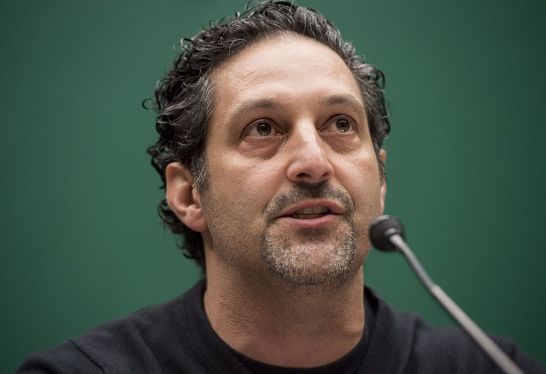Next-Generation Payload Deployment on the Horizon
SpaceX is significantly increasing the stakes in its Starship test flight program, with the next launch expected to demonstrate payload deployment for the first time. The company has announced that it will be sending 10 "simulator" payloads into space, which are similar in size and weight to the next-gen satellites it plans to deploy using Starship.
Starlink Payload Simulators: A Glimpse into the Future
The payload simulators will travel on the same trajectory as the upper stage of the rocket, also known as Starship, and splash down in the Indian Ocean. These model spacecraft are designed to mimic the characteristics of the operational version of the satellites, called V3, which are expected to be the first real payloads launched by Starship.
A Leap Forward for Starlink
The successful deployment of these payload simulators is a crucial step towards bringing Starship online and enabling SpaceX to rapidly deploy its Starlink satellite constellation. The next-gen V3 satellites will be much heavier than the current V2 Mini spacecraft, making it difficult for Falcon 9 rockets to launch them efficiently.
Starship’s Payload Capacity: A Game-Changer
Thanks to Starship’s incredible payload capacity, SpaceX plans to deploy 60 V3 satellites per launch, which will add 60 terabits per second of capacity to the Starlink network. This is a significant increase compared to the current V2 Mini satellites, with each satellite offering more than 10 times the downlink and 24 times the uplink capacity.
Upgrades to the Rocket: A Boost in Reliability and Performance
In addition to the payload deployment demonstration, SpaceX will also be introducing a slew of upgrades to the Starship rocket. These include improvements to the propulsion system, avionics, and heat shield, which are expected to boost reliability and performance.
Catching the Super Heavy Booster: A Feat Achieved
During this test launch, SpaceX will attempt to "catch" the Super Heavy booster, a feat that the company accomplished for the first time during the fifth test in October. This is an important milestone in the development of reusable rockets, which could potentially reduce the cost of access to space.
The Road Ahead: A Stepping Stone towards Commercial Launches
The success of this test launch will be a crucial stepping stone towards commercial launches with Starship and the deployment of the V3 satellites. With its payload capacity and upgraded features, Starship is poised to revolutionize the way we access space and deploy satellite constellations.
Timeline: When to Expect the Next Launch
The next Starship test launch is expected to take place later this month, with the company providing regular updates on its progress. As we count down to the launch, one thing is clear: SpaceX is upping the ante in its quest to make space travel more accessible and efficient.
Background Information
SpaceX has been developing the Starship program for several years, with a focus on creating a reusable spacecraft capable of carrying both people and cargo to the moon, Mars, and other destinations. The company has made significant progress in recent months, including the successful demonstration of its Raptor engine and the first commercial launch of a Crew Dragon spacecraft.
What’s Next?
As SpaceX continues to push the boundaries of space exploration, it will be interesting to see how the Starship program evolves over time. With the introduction of payload deployment capabilities, the company is taking a significant step towards making its satellite constellation ambitions a reality.
Key Players: SpaceX and Its Partners
SpaceX has been at the forefront of private spaceflight development, with a range of partners and collaborators contributing to its efforts. Some of the key players in this industry include:
- NASA: The National Aeronautics and Space Administration has been working closely with SpaceX on several projects, including the Commercial Crew Program.
- United Launch Alliance (ULA): This joint venture between Boeing and Lockheed Martin provides launch services for a range of satellites and spacecraft.
- Blue Origin: Founded by Jeff Bezos, Blue Origin is another private space company working towards commercializing access to space.
Conclusion
The next Starship test launch will be an exciting milestone in the development of SpaceX’s payload deployment capabilities. With its impressive payload capacity and upgraded features, Starship has the potential to revolutionize the way we access space and deploy satellite constellations. As we look forward to this important step towards commercial launches, it is clear that SpaceX is upping the ante in its quest to make space travel more accessible and efficient.
Technical Details
- Starship: A reusable spacecraft designed for carrying both people and cargo to the moon, Mars, and other destinations.
- Super Heavy Booster: The rocket booster used by Starship, which will be attempting a "catch" during this test launch.
- Raptor Engine: The powerful engine developed by SpaceX for use in its Starship program.
- Crew Dragon: A spacecraft designed for carrying astronauts to the International Space Station.
References
- SpaceX Press Release: Details on the next Starship test launch and payload deployment demonstration.
- NASA Website: Information on the Commercial Crew Program and NASA’s partnership with SpaceX.
- United Launch Alliance (ULA) Website: Details on their launch services for satellites and spacecraft.




